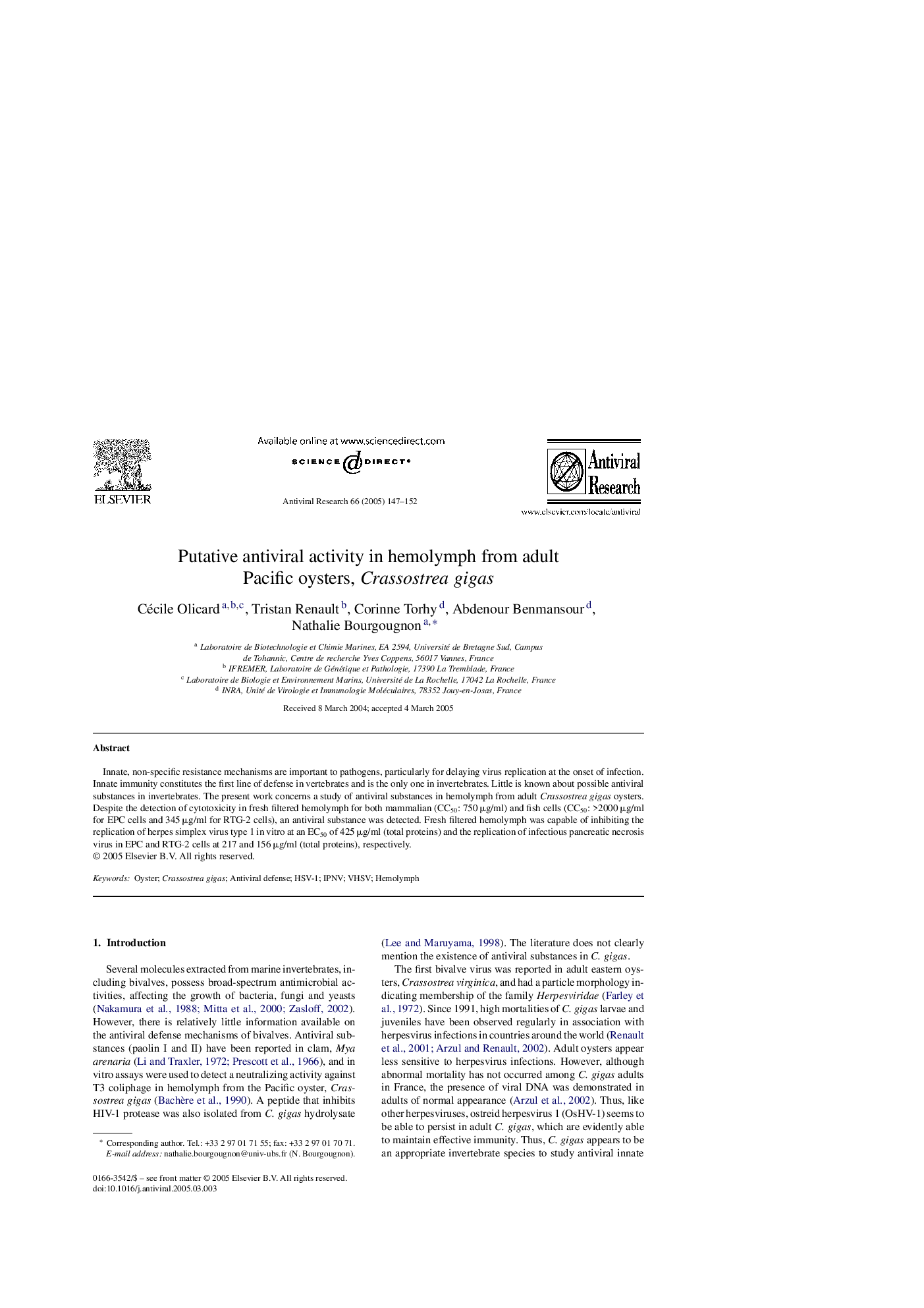| Article ID | Journal | Published Year | Pages | File Type |
|---|---|---|---|---|
| 9000881 | Antiviral Research | 2005 | 6 Pages |
Abstract
Innate, non-specific resistance mechanisms are important to pathogens, particularly for delaying virus replication at the onset of infection. Innate immunity constitutes the first line of defense in vertebrates and is the only one in invertebrates. Little is known about possible antiviral substances in invertebrates. The present work concerns a study of antiviral substances in hemolymph from adult Crassostrea gigas oysters. Despite the detection of cytotoxicity in fresh filtered hemolymph for both mammalian (CC50: 750 μg/ml) and fish cells (CC50: >2000 μg/ml for EPC cells and 345 μg/ml for RTG-2 cells), an antiviral substance was detected. Fresh filtered hemolymph was capable of inhibiting the replication of herpes simplex virus type 1 in vitro at an EC50 of 425 μg/ml (total proteins) and the replication of infectious pancreatic necrosis virus in EPC and RTG-2 cells at 217 and 156 μg/ml (total proteins), respectively.
Related Topics
Life Sciences
Immunology and Microbiology
Virology
Authors
Cécile Olicard, Tristan Renault, Corinne Torhy, Abdenour Benmansour, Nathalie Bourgougnon,
